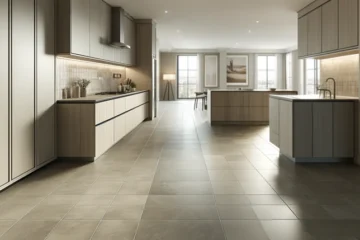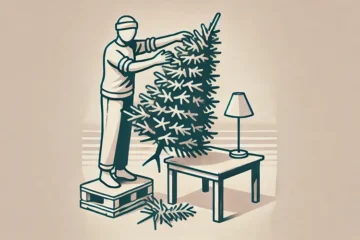How To Restore Antique Mirrors

Antique mirrors have a certain charm and character that modern mirrors just can’t replicate. Over time, though, even the most exquisite pieces can lose their shine. Whether it’s a family heirloom or a unique thrift store find, restoring an antique mirror can bring it back to its former glory. We’ll dive into the essential steps for restoring these mirrors, discuss the common challenges you’ll face, and share some helpful tips to make sure your mirror looks amazing again.
If you’re looking to restore an antique mirror, you’re probably hoping to reclaim its original beauty without compromising its vintage feel. Restoring antique mirrors can seem like a daunting task, but with a little know-how and some careful techniques, you’ll be amazed at the transformation you can achieve.
Why Restore an Antique Mirror?
Restoring an antique mirror goes beyond aesthetics. These mirrors are often steeped in history, carrying with them the charm and sophistication of another era. Over time, they may suffer from blemishes, scratches, or tarnishing. Restoration can revive their elegance and preserve a piece of history for future generations to enjoy.
Reasons to Restore an Antique Mirror
- Preserve a family heirloom or sentimental piece.
- Enhance the value of a collectible mirror.
- Add unique character and style to your home decor.
- Save money by restoring rather than replacing.
Assessing the Condition of Your Antique Mirror
Before diving into the restoration, take some time to assess the condition of your mirror. Look for signs of wear and damage, including black spots, silvering issues, cracks, and frame damage. This assessment will help you determine the scope of the restoration and the materials or tools you may need.
Common Antique Mirror Issues and Recommended Solutions
| Issue | Description | Recommended Solution |
|---|---|---|
| Oxidation/Black Spots | Blackened or cloudy spots on the mirror’s surface caused by aging silvering. | Use reflective tape for small spots or consider a re-silvering kit for larger areas. |
| Frame Damage | Chips, cracks, or missing pieces in wooden or metal frames. | Repair with wood putty or metal polish, or replace pieces with modeling clay if needed. |
| Scratches | Minor surface scratches that dull the glass. | Buff gently with glass resin or use a DIY scratch repair kit. |
| Fading or Dullness | Loss of shine due to dust buildup or aging. | Regularly clean with a gentle cloth and consider re-silvering if necessary. |
| Structural Instability | Frame loosening or becoming unsteady over time. | Reinforce with adhesive or consult a professional if extensive. |
What Tools and Materials Do You Need for Restoration?
Restoring an antique mirror requires some specialized tools and materials. Here are the basics you’ll need for most restoration projects:
- Microfiber Cloth: For gentle cleaning without scratching the glass surface.
- Glass Cleaner: Use a mild glass cleaner or make a vinegar-water solution for cleaning.
- Silvering Kit: If the mirror’s reflective backing needs restoration, a silvering kit can help.
- Putty and Sandpaper: Essential for repairing and smoothing out any frame damage.
- Protective Gloves: For safety, especially if handling glass pieces.
- Soft Paintbrushes: For cleaning intricate frame details.
Helpful Hint:
When choosing a glass cleaner, avoid ammonia-based products, as they can damage the mirror’s reflective backing over time. Opt for a gentler cleaner or use a diluted vinegar solution.
Cleaning Your Antique Mirror Carefully
Cleaning an antique mirror may seem simple, but it requires a gentle touch to avoid damage. Dusting the frame first will keep particles from scratching the glass during cleaning. Then, use a microfiber cloth with a mild cleaning solution to wipe down the surface. Avoid soaking the mirror, as excess moisture can damage the silvering layer on the back.
Step-by-Step Cleaning Process
- Dust the Frame: Use a soft paintbrush or microfiber cloth to remove dust from the frame’s intricate details.
- Wipe the Glass: Spray a small amount of glass cleaner on a microfiber cloth (not directly on the glass), then gently wipe the surface.
- Remove Tough Spots: For stubborn marks, a mix of baking soda and water can help lift stains without scratching.
How to Fix Black Spots on Your Antique Mirror
Black spots are a common issue in antique mirrors due to oxidation of the reflective backing. While it’s hard to completely eliminate these spots, you can minimize their appearance with careful techniques.
Addressing Black Spots Step-by-Step
- Assess the Damage: Determine if the spots are small or if the reflective layer is severely damaged.
- Use a Mirror Re-Silvering Kit: If black spots are numerous, consider using a re-silvering kit. These kits provide chemicals to reapply the reflective backing.
- Apply Reflective Tape: For small spots, some restorers use reflective tape behind the glass to cover minor flaws.
Stats:
Reflective silvering loss is the most common issue found in antique mirrors, affecting nearly 60% of mirrors over 50 years old.
Restoring the Frame of an Antique Mirror
An antique mirror frame can be just as important as the glass itself. If your mirror has a wooden or metal frame, restoration may involve cleaning, repairing, or even repainting it.
Restoring a Wooden Frame
Wooden frames can suffer from rot, paint chipping, or structural issues. To restore a wooden frame:
- Clean the Frame: Dust and clean with a soft cloth, using a mild wood cleaner if necessary.
- Repair Any Cracks: Use wood putty to fill in small cracks or chips, then sand gently to smooth.
- Repaint or Stain: If the frame’s paint or stain is worn, consider applying a fresh coat that matches the original finish.
Restoring a Metal Frame
Metal frames may suffer from rust or tarnish. Follow these steps:
- Remove Rust: Use fine-grade sandpaper or a metal brush to remove surface rust.
- Polish the Metal: Apply a metal polish to restore shine and protect the frame from future rust.
- Seal the Surface: To prevent further corrosion, use a clear sealant spray specifically made for metal.
Taking these steps can breathe new life into the frame, making it a beautiful complement to your restored mirror.
Repairing Mirror Silvering and Reflective Backing
The silvering process, which gives mirrors their reflective quality, can fade over time. Restoring the silvering layer is a bit more involved but can dramatically improve the mirror’s appearance.
Options for Restoring Silvering
- DIY Silvering Kit: Silvering kits allow you to reapply a reflective layer yourself. These kits can be tricky to use, so follow the instructions carefully.
- Professional Resilvering: For valuable or heavily damaged mirrors, consider hiring a professional for a more durable finish.
Helpful Hint:
If you’re unsure about using a silvering kit, start with a small test area on the mirror to get the hang of the process before tackling the entire surface.
How to Fix Cracks and Chips in Antique Mirror Glass
Cracks and chips can detract from a mirror’s overall look and feel, but in many cases, you can repair or at least minimize their appearance. Depending on the severity, you might need professional help, but minor issues can often be handled with the right materials.
Repairing Small Chips
For small chips, a glass repair resin kit can do wonders. These kits are readily available and generally easy to use. Follow these steps for minor chip repair:
- Clean the Area: Start by cleaning the chipped area with a glass cleaner and a microfiber cloth.
- Apply Glass Resin: Using a glass repair resin kit, apply resin carefully over the chip, following the kit’s instructions.
- Allow to Cure: Let the resin cure fully, usually for at least 24 hours, before gently buffing the surface.
Handling Cracks
For larger cracks, it may be best to seek professional help, as attempting DIY fixes can sometimes worsen the damage. However, if the crack is minimal and doesn’t compromise the mirror’s structure, a repair kit designed for windshields can be effective.
Helpful Hint:
If your antique mirror has a few small chips but is otherwise intact, applying a thin layer of resin over the chips can help prevent further chipping or cracking.
How to Replace Missing or Broken Mirror Frame Pieces
One common challenge with antique mirrors is missing or broken pieces of the frame, especially if it’s intricate or carved. Replacing these pieces requires patience and often a bit of artistic skill.
Creating Replacement Frame Pieces
If you’re missing a small, decorative piece from your mirror frame, consider crafting a replacement with modeling clay or wood filler:
- Mold the Shape: Using a moldable material like air-dry clay, sculpt a replacement part that matches the missing section.
- Attach the Piece: Once dried, adhere the piece with wood glue or a strong adhesive.
- Paint or Stain to Match: Paint or stain the new piece to blend it in with the original frame.
Ordering Replacement Parts
If creating a replacement piece seems too complex, you may be able to find antique mirror parts from online stores or local antique shops. Ordering a matching piece can be a cost-effective and straightforward way to complete your mirror’s look.
How to Protect and Maintain Your Restored Antique Mirror
Once you’ve invested time and effort into restoring your antique mirror, it’s essential to maintain it to prevent future wear and damage. Here are some maintenance tips to keep your mirror looking its best.
Regular Dusting
Regularly dusting your mirror and frame will help maintain its shine and prevent dust build-up in intricate details. Use a soft microfiber cloth or a feather duster for this task.
Avoid Moisture
Antique mirrors are sensitive to moisture, as it can damage the silvering and frame. Keep your mirror away from humid environments, like bathrooms, and never apply water directly onto it.
Protect from Sunlight
Direct sunlight can cause the frame to fade and may even lead to cracking over time. Position your antique mirror out of direct sunlight to protect its finish and structure.
Stats:
According to preservation experts, antique mirrors placed in indirect light and low-humidity environments last up to 40% longer than those exposed to sunlight and moisture.
Tips for Displaying Antique Mirrors
Displaying an antique mirror correctly can enhance your space while also protecting the mirror itself. Here are some display tips to make the most of your restored piece.
Consider Lighting
Position your mirror in a well-lit area but avoid direct sunlight. Placing mirrors where they can reflect natural light helps to brighten a room while protecting the mirror’s integrity.
Choose a Secure Wall Placement
Antique mirrors can be heavy, so it’s important to use sturdy hardware and wall anchors to secure them. Avoid hanging antique mirrors over busy areas where they might get knocked.
When to Seek Professional Help for Antique Mirror Restoration
Some restoration jobs are best left to professionals, especially if your mirror is highly valuable or significantly damaged. A professional restoration expert can ensure the mirror is restored without further damage, preserving its authenticity and value.
Signs You Need a Professional
- Severe Silvering Loss: If large sections of silvering have deteriorated, a professional can achieve a more seamless repair.
- Complex Frame Damage: For ornate or structural frame issues, professional help ensures proper restoration.
- Significant Cracks: Attempting to repair large cracks without the proper expertise could cause more damage.
FAQs
Wrapping Up
Restoring an antique mirror is a rewarding journey, breathing new life into a unique piece of history. Whether you’re fixing small chips, re-silvering the mirror, or rejuvenating an ornate frame, each step in the process can add beauty and charm to your mirror. By following the detailed restoration steps and handling your mirror with care, you ensure it will last for years to come. Restoring an antique mirror not only preserves its elegance but also gives you a beautiful, distinctive addition to your home decor. Take your time, and enjoy each stage of restoration, knowing you’re bringing a piece of the past into your present.


